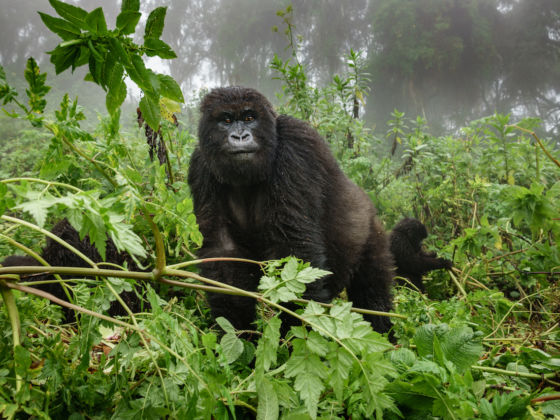Dellene suddenly cried, “Oh My God!” and tried to climb my back. I looked to my left and saw an enormous gorilla bursting out of the thick foliage and charging toward us like an onrushing railroad boxcar.
As good fortune would have it, the day before we were to see the gorillas, I happened to meet Rosamond Carr (Dian Fossey’s best friend in Africa and now deceased) in our hotel’s gift shop in Gisenyi. She graciously answered some of my questions about the gorillas that Fossey worked with. She explained that most of them were in good shape, but that a few had recently been taken by poachers. Poachers sometimes kill gorillas for bush meat or simply for trophies such as heads and hands that might be made into ashtrays and other gruesome trinkets.
